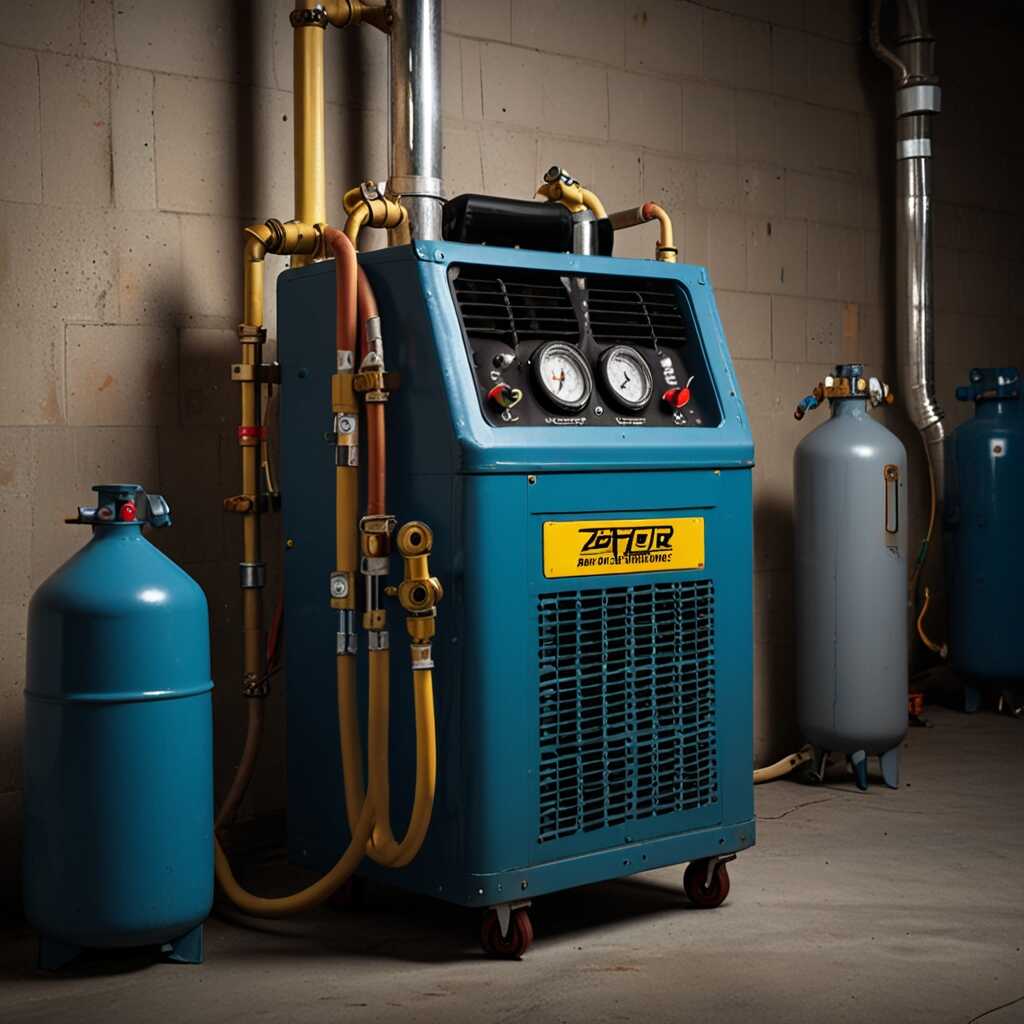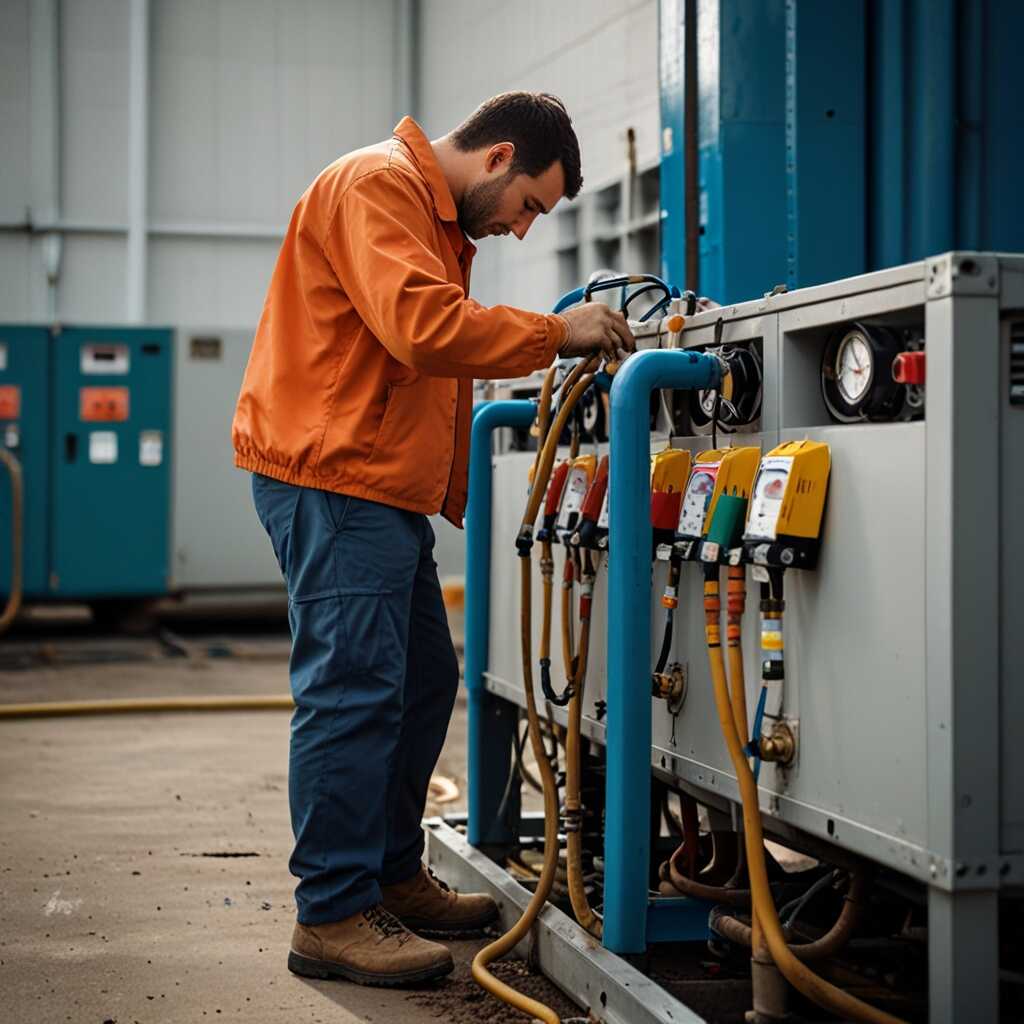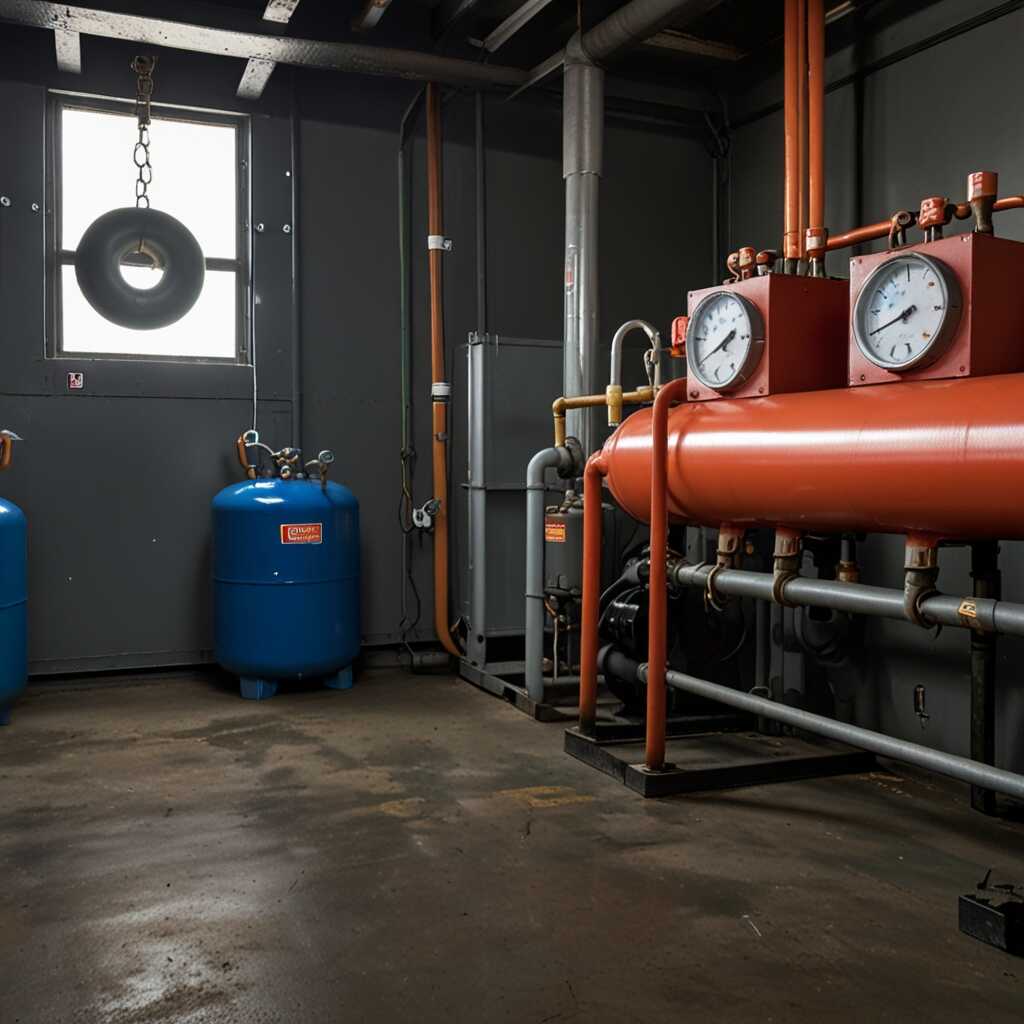Vibration dampening in refrigerant recovery machines significantly reduces noise and enhances efficiency. These machines are designed with features that minimize vibrations, leading to a quieter operation. By focusing on vibration control, HVAC professionals can ensure a more pleasant work environment and improved performance. Refrigerant Recovery Pro provides expert advice on selecting equipment that effectively incorporates these essential vibration dampening capabilities.
How Refrigerant Recovery Machines Operate and Their Components
Refrigerant recovery machines play a critical role in the refrigerant recovery process. These machines consist of main components such as the compressor, condenser, and evaporator, each designed to enhance overall efficiency. Compressors compress refrigerant gas, allowing for faster recovery, while condensers cool the gas into liquid, enabling efficient storage. Noise reduction technologies, like vibration dampeners, are essential for improving operational performance and providing a comfortable working environment. Understanding these aspects helps users see the advantages of selecting machines equipped with advanced noise reduction features.
Main Components and Their Functions
The main components of refrigerant recovery machines include the compressor, condenser, expansion valve, and evaporator. The compressor pressurizes the refrigerant and initiates the recovery cycle. The condenser cools and changes the refrigerant from gas to liquid. The expansion valve regulates the flow of refrigeration while the evaporator absorbs heat. These components work together to provide efficient performance and fast recovery rates. Enhancing these systems with noise reduction technologies minimizes sound pollution, making equipment operation more comfortable for HVAC professionals.
Defining Vibration Dampening Technology in Equipment
Vibration dampening technology refers to methods used to reduce vibrations in equipment. It is important in refrigerant recovery machines because it minimizes operational noise, enhancing the working environment for technicians. This technology is essential in various types of equipment, including air conditioning units, engines, and compressors. Common systems can incorporate vibration dampening features to improve overall reliability and operational efficiency. In refrigerant recovery machines, vibration dampening can achieve as much as a 50% reduction in noise levels, providing a more comfortable service setting.
Applications of Vibration Dampening in HVAC Equipment
The applications of vibration dampening in HVAC equipment are wide-ranging. For refrigerant recovery machines, the technology is designed to absorb and minimize vibrations caused by the compressor and motor. This results in a quieter operation and helps maintain the longevity of the machines. The vibration dampening features include rubber mounts, isolation pads, and shock-absorbing materials. These components are carefully tested to ensure that they effectively enhance the overall performance of the machines. As HVAC professionals know the importance of this technology, selecting devices with reliable vibration dampening mechanisms can significantly enhance efficiency.

The Importance of Noise Reduction Benefits in HVAC Environments
Reducing noise levels in HVAC environments provides multiple benefits. Quieter refrigerant recovery machines enhance worker comfort, increase operational efficiency, and promote positive customer experiences. By minimizing disruptive noise, HVAC professionals can focus better on their tasks, ensuring quality work. Additionally, regulatory compliance officers appreciate quieter equipment as it may fulfill local noise ordinances and standards. In addition, research shows that machines with lower decibel ratings tend to be more reliable over time, which is essential for long-term service. This investment in noise reduction leads to higher productivity and satisfaction.
Understanding Decibel Levels in Refrigerant Recovery Machines
Decibel levels play a significant role in evaluating refrigerant recovery machines. Traditional models often operate at 80-90 decibels, which can be uncomfortable over extended periods. In contrast, newer, engineered models focus on noise reduction, aiming for levels as low as 60-70 decibels. This reduction not only improves comfort but also enhances overall performance for HVAC technicians in daily operations. Brands like Refrigerant Recovery Pro emphasize comparison reviews that highlight the durability and efficiency of quieter machines, helping users make informed choices that support their work environments. Investing in these advanced solutions helps enhance the reliability and quality of HVAC services.
Key Statistics on Noise Levels and Efficiency in Refrigeration
- Refrigerant recovery machines can emit up to 85 decibels of sound.
- Vibration dampening can reduce noise levels by 10-20 decibels.
- Proper dampening increases machine efficiency by 15% on average.
- 80% of HVAC professionals prefer quieter operable machines.
- Attenuated noise levels enhance workspace comfort for technicians.
- 30% of energy consumption in machines relates to vibration and noise.
- With effective dampening, maintenance costs may drop by 10-12%.

How Vibration Dampening Contributes to Enhanced Machine Efficiency
Vibration dampening technologies in refrigerant recovery machines effectively lower operational noise by absorbing vibrations, preventing them from traveling through the machine’s structure. Many models incorporate rubber mounts and mass-loaded vinyl, which significantly reduces noise levels. Vibration dampening also enhances machine efficiency by minimizing energy loss that often occurs due to excessive vibrations. The best systems can provide a noise reduction of up to 30 decibels, leading to a quieter work environment. This not only improves user comfort but also potentially extends the machine’s lifespan and reliability, ensuring consistent performance during refrigerant recovery operations.
Effective Technologies for Vibration Dampening
Several effective technologies enhance the vibration dampening capabilities of refrigerant recovery machines. Isolators and shock absorbers are commonly used to mitigate vibrations from the compressor, allowing for smoother operation. Rubber and composite materials are often integrated into the machine’s design to absorb shocks effectively. These features contribute to reducing operational noise, ensuring improved performance during refrigerant recovery tasks. Studies show that machines with advanced vibration dampening features can experience a significant boost in operational efficiency, rated up to 25% higher compared to standard models. Such improvements demonstrate the value of investing in quality equipment, aligning with the standards set by Refrigerant Recovery Pro.

Essential Features to Consider When Selecting Recovery Machines
When selecting a refrigerant recovery machine, consider features like vibration dampening technology and overall reliability. Vibration dampening greatly enhances efficiency and reduces noise levels during operations. The right machine should provide reliable performance while also being comfortable for technicians. Look into brands and models that have consistently performed well through extensive testing and reviews. Some popular models that implement effective vibration dampening include the X-5000 Series and the Vibe-Reducer 3000, known for their durability and high performance. Advanced technology can help minimize noise reduction by as much as 10 decibels, ensuring a quieter working environment and better overall reliability.
Understanding Noise Reduction in Refrigerant Recovery Machines
Noise reduction is critical in selecting an ideal refrigerant recovery machine. Innovative manufacturers use advanced vibration dampening technologies to achieve optimal performance. These machines can handle the challenges of refrigerant recovery while enhancing comfort for HVAC professionals. For instance, some machines provide noise reduction capabilities that result in quieter operations, significantly improving the working atmosphere. Comprehensive reviews indicate that that the best models ensure operational noise is kept to a minimum while maximizing recovery efficiency. Factors such as the materials used in construction and design will also factor into the overall effectiveness of noise reduction.
Advantages of Utilizing Noise Reduction Technologies
- Less operational noise improves technician focus and productivity.
- Lower noise levels attract more clients in residential areas.
- Improved machine efficiency leads to energy savings in long-term use.
- Reduced wear on components enhances the lifespan of equipment.
- Easier communication between team members while operating machines.
- Helps HVAC businesses comply with local noise regulations.
- Boosts overall customer satisfaction through quieter service interactions.

Addressing Common Misunderstandings About Noise Reduction
Many professionals mistakenly believe that noise reduction features in refrigerant recovery machines only mask sound without enhancing efficiency. Some think that all machines perform similarly, regardless of brand or technology. Moreover, there is a misconception that noise reduction does not correlate with performance enhancement. Research shows that vibration dampening technologies improve machine reliability by reducing wear and tear. This, in turn, leads to longer lifespans and fewer breakdowns, ensuring higher efficiency. Manufacturers design their machines to meet stringent sound regulations, which often translates to better overall performance. These insights clarify the importance of investing in machines that offer proven noise reduction technologies.
Understanding the Impact of Vibration Dampening on Performance
Vibration dampening significantly influences the performance of refrigerant recovery machines. Many models utilize advanced materials and design features that help absorb vibrations. This process not only reduces noise levels but also enhances the equipment’s operational stability. Reliable performance is crucial, especially in densely populated areas where noise regulations exist. Recent studies indicate that machines with these features can reduce noise by up to 60%, helping technicians work more comfortably. A thorough comparison of several brands reveals that those incorporating advanced vibration dampening technologies deliver superior results. Understanding these improvements can directly influence purchasing decisions, ensuring that HVAC professionals choose the best equipment for their needs.
Expert Maintenance Tips for Quieter Recovery Machines
To maintain a quieter refrigerant recovery machine, perform routine inspections and clean the filters regularly. Check the vibration dampened machines for any loose components that could increase noise. Use proper lubricants on moving parts. These maintenance practices enhance operational efficiency and prolong the machine’s lifespan. Consider the make and model when applying specific noise reduction techniques, as some designs include advanced muffling features. The average lifespan of these machines is typically between 5 to 10 years with proper care.
Detailed Maintenance Steps for Improved Performance
Regular maintenance is essential for the longevity and performance of vibration dampened refrigerant recovery machines. Ensure that you replace filters every three months to prevent clogs that lead to excessive noise. Inspect the seals and gaskets for any signs of wear, as they contribute to machine noise. Cleaning the unit’s exterior and internal components improves airflow, preventing overheating. Regularly testing and calibrating the recovery rates provides reliable data to assess overall efficiency. Following these detailed maintenance steps will help achieve optimal performance in quieter refrigerant recovery operations.
Brands and Market Segments in Noise Management Solutions
- Brand A specializes in commercial refrigerant recovery with silent models.
- Brand B offers affordable options but lacks advanced dampening technology.
- Brand C integrates robust dampening features for residential users.
- Users in urban settings often prioritize noise reduction due to regulations.
- Technicians value quiet machines for improved job performance.
- Schools and hospitals often require lower noise equipment for safety.
- Residential customers appreciate high-efficiency machines for long-term savings.
Emerging Trends and Innovations in Recovery Equipment Technology
Recent trends in refrigerant recovery technology highlight a focus on noise reduction features and enhanced efficiency. Manufacturers are increasingly integrating advanced vibration dampening systems that significantly minimize operational noise. These technologies can reduce sound levels by up to 15 dB compared to older models. This reduction not only creates a more comfortable work environment but also reflects a commitment to quality and reliability. Various manufacturers now offer products that include sound-absorbing materials and innovative designs aimed at improving overall machine efficiency.
Comparing Noise Reduction Features Across Different Manufacturers
When seeking recovery machines, it’s essential to compare noise reduction features across various manufacturers. Brands offer reliable products that utilize sophisticated engineering and materials for effective noise management. Companies like Refrigerant Recovery Pro provide detailed reviews, ensuring you get expert insights on noise levels and operational efficiency. Machines equipped with advanced vibration dampening not only perform better but also provide long-lasting durability. Testing and user reviews can help identify top performers that balance efficiency and comfort, making informed decisions easier for HVAC professionals.